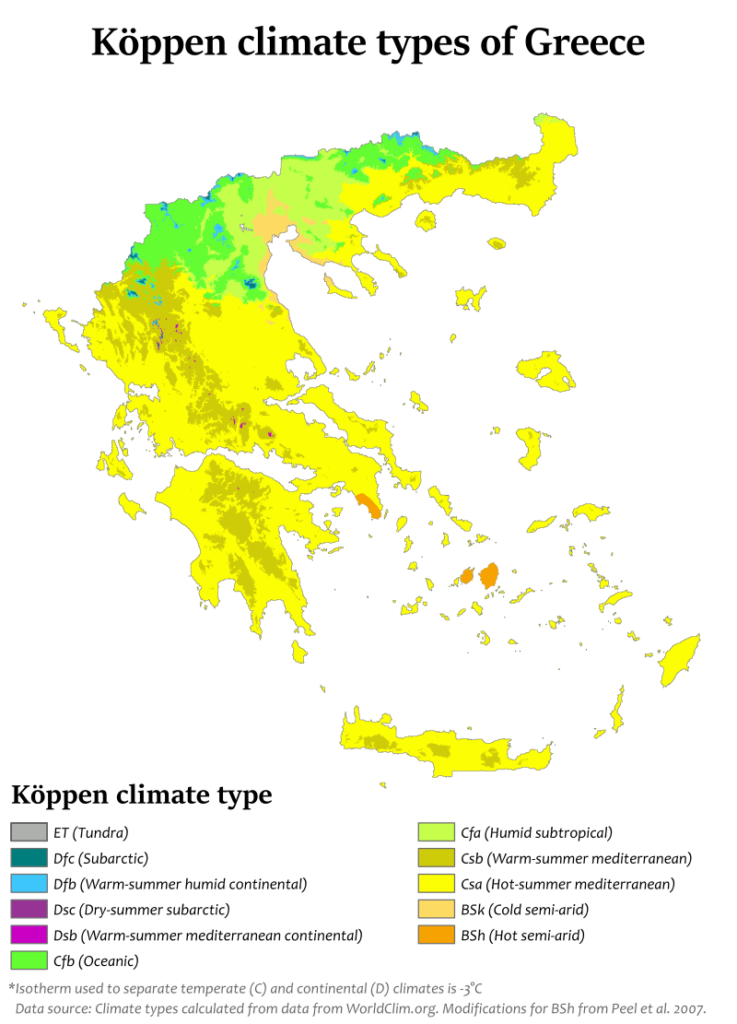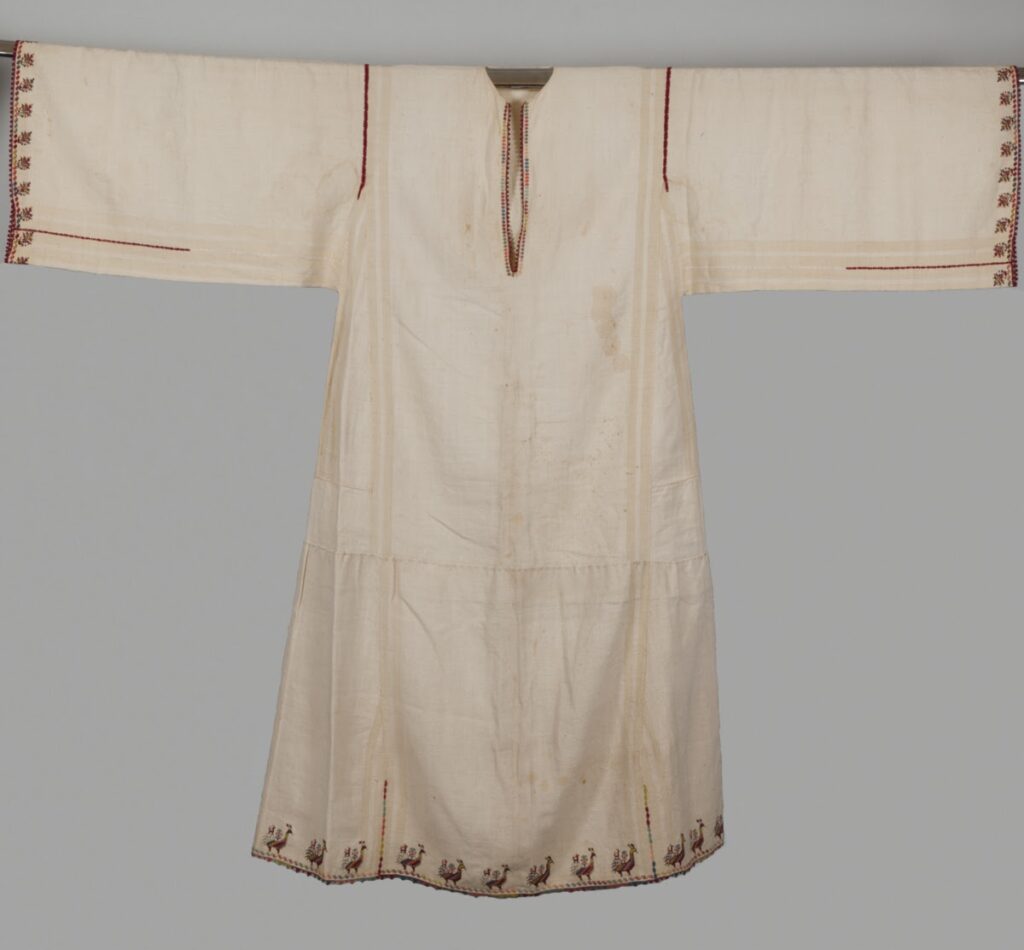Ancient Greek and Roman clothing information sheet – illinois extension. (n.d.). https://web.extension.illinois.edu/artifact/shared/pdf/greeceandrome/Clothing%20Info%20Sheet.pdf
Angelakis. (2022). Reframing the High-Technology Landscape in Greece: Empirical Evidence and Policy Aspects. International Journal of Business and Economic Sciences Applied Research, 15(2), 58–70. https://doi.org/10.25103/ijbesar.152.06
Apparel ecommerce market in Greece – data, trends, top stores: ECDB.com. Apparel eCommerce Market in Greece – Data, Trends, Top Stores | ECDB.com. (2022). https://ecommercedb.com/markets/gr/apparel
Baker, C. P. (2023, October 20). Greece in July: Travel ideas, weather, and more. kimkim. https://www.kimkim.com/c/greece-in-july
Barbosa, Zampirolli, C. D., Zuppo, I. F., Nascimento, R. M., Kritikou, P., Acurcio, F. A., & Álvares-Teodoro, J. (2022). Regulatory intelligence of health technologies in Greece. Revista Brasileira de Farmácia Hospitalar e Serviços de Saúde, 13(1), 789–. https://doi.org/10.30968/rbfhss.2022.131.0789
Bertatos, G., & Tsounis, N. (2023, August). Assessing the Impact of Trade Barriers on Energy Use in Turbulent Times: Current Conditions and Future Outlook for Greece. The City University of New York. https://www.cuny.edu/cuny-login/
Central Intelligence Agency. (2023). The World Factbook. Central Intelligence Agency. https://www.cia.gov/the-world-factbook/countries/greece/
Chemises – complete guide: Everything you need to know. The Ultimate Guide to Women’s Lingerie | BonBon Lingerie Blog. (2023, April 30). https://www.bonbonlingerie.info/chemises-complete-guide/
Culture in Greece & the islands: Greeka. Greekacom. (n.d.). https://www.greeka.com/greece-culture/#:~:text=98%25%20of%20the%20Greeks%20are,big%20proportion%20of%20Orthodox%20Christians.
Climate – Greece. Greece climate: average weather, temperature, rain. (n.d.). https://www.climatestotravel.com/climate/greece
Climate types for kids: Mediterranean climate. Climatetypesforkids. (n.d.). https://www.climatetypesforkids.com/mediterranean-climate#:~:text=The%20climate%20is%20known%20for,month%20averages%20about%2072%20degrees.
Duley, M. (2022, November 22). Here’s why Americans love shopping small. GOBankingRates. https://www.gobankingrates.com/saving-money/shopping/why-americans-love-shopping-small/
Eastern Macedonia and Thrace (2018). All about Eastern Macedonia and Thrace from Greece.Ru. https://www.greece.ru/en/region/eastern-macedonia-and-thrace/
ELENIANNA SMPC. (n.d.). The sweet wonder of greek honey. ELENIANNA SMPC. https://www.elenianna.com/the-sweet-wonder-of-greek-honey
Faniadis, D. (2022, December 23). Exporter Guide. USDA Foreign Agricultural Service. https://apps.fas.usda.gov/newgainapi/api/Report/DownloadReportByFileName?fileName=Exporter%20Guide_Rome_Greece_GR2022-0005.pdf
Ger, K. (2021, August 31). Varieties of greek honey. Kardamas. https://www.kardamas.com/blog/varieties-of-greek-honey#:~:text=About%2060%25%20of%20Greek%20honey,for%20their%20extremely%20antioxidant%20properties.
Greece Economic SWOT. Business Monitor Online. https://advance-lexis-com.citytech.ezproxy.cuny.edu/api/document?collection=news&id=urn:contentItem:68KR-TFD1-JD33-J15P-00000-00&context=1516831.
Greece – EU member country profile. European Union. (n.d.). https://european-union.europa.eu/principles-countries-history/country-profiles/greece_en
Greece – trade barriers. International Trade Administration | Trade.gov. (2022, July 27). https://www.trade.gov/country-commercial-guides/greece-trade-barriers#:~:text=Greece%20%2D%20Trade%20Barriers&text=Greece%20maintains%20nationality%20restrictions%20on,with%20Greek%20or%20EU%20business
Greekacom. (n.d.). Laiki Agora (Farmer’s Market) in Athens, Greece: Greeka. Greekacom. https://www.greeka.com/attica/athens/sightseeing/farmer-market/
Grekousis, & Gialis, S. (2019). More Flexible Yet Less Developed? Spatio-Temporal Analysis of Labor Flexibilization and Gross Domestic Product in Crisis-Hit European Union Regions. Social Indicators Research, 143(2), 505–524. https://doi.org/10.1007/s11205-018-1994-0
Haesen, Lembrechts, J. J., De Frenne, P., Lenoir, J., Aalto, J., Ashcroft, M. B., Kopecký, M., Luoto, M., Maclean, I., Nijs, I., Niittynen, P., Hoogen, J., Arriga, N., Brůna, J., Buchmann, N., Čiliak, M., Collalti, A., De Lombaerde, E., Descombes, P., … Greiser, C. (2021). ForestTemp – Sub‐canopy microclimate temperatures of European forests. Global Change Biology, 27(23), 6307–6319. https://doi.org/10.1111/gcb.15892
Honey. Agriculture and rural development. (n.d.). https://agriculture.ec.europa.eu/farming/animal-products/honey_en
How to export from Greece? (2022, June 11). https://howtoexportimport.com/How-to-export-from-Greece–10013.aspx
How to import to Greece? (2022, June 22). https://howtoexportimport.com/How-to-Import-to-Greece–10012.aspx
Irby. (2021). Marina Panagiotaki, Ilias Tomazos & Fotios Papadimitrakopoulos . 2020. Cutting-edge technologies in ancient Greece: materials science applied to trace ancient technologies in the Aegean world. Antiquity, 95(379), 254–. https://doi.org/10.15184/aqy.2020.229
Jaracz, J. (25AD). How greek traditions work. HowStuffWorks. https://people.howstuffworks.com/culture-traditions/national-traditions/greek-tradition2.htm#:~:text=Linen%20was%20also%20traditionally%20used,holidays%20%5BSource%3A%20Riehecky%5D.
Joint Statement – Greek Defence Industry Receives Major Boost Through Production of Advanced Drone Technologies in Greece. (2023). Technology Business Journal, 18. https://link-gale-com.citytech.ezproxy.cuny.edu/apps/doc/A750037382/GBIB?u=cuny_nytc&sid=bookmark-GBIB&xid=a0b54930
John-Paul Ford Rojas. (2022). Euro crashes to parity with dollar: Now it’s worth just $1.00005. Daily Mail (London, England)
Katou, Budhwar, P. S., & Patel, C. (2021). Idiosyncratic deals in less competitive labor markets: testing career i-deals in the Greek context of high uncertainties. International Journal of Human Resource Management, 32(17), 3748–3775. https://doi.org/10.1080/09585192.2020.1759672
Keridis. (2018). The Migration/Refugee Crisis and the (Un/Re) Making of Europe: Risks and Challenges for Greece. Uluslararasi Iliskiler / International Relations, 15(58), 69–80. https://doi.org/10.33458/uidergisi.518934
Lenoël, Macchiarelli, C., & Young, G. (2023). Greece 2010–18: What Could Have Been Done Differently? Open Economies Review, 34(2), 281–315. https://doi.org/10.1007/s11079-022-09672-8
Lignite in the Greek energy system: Heinrich Böll stiftung – thessaloniki office. Greece. (2020). https://gr.boell.org/en/lignite-greek-energy-system
Loannidis, Kosmidou, K., & Papanastasiou, D. (2023). Public awareness of renewable energy sources and Circular Economy in Greece. Renewable Energy, 206, 1086–1096. https://doi.org/10.1016/j.renene.2023.02.084
Malkopoulou. (2021). Greece: A Procedural Defence of Democracy against the Golden Dawn. European Constitutional Law Review, 17(2), 177–201. https://doi.org/10.1017/S1574019621000146
Metallidou, Psannis, K. E., & Alexandropoulou-Egyptiadou, E. (2020). Survey on the Patent Law Awareness and the Entrepreneurial Trend of Greece’s Graduates of Technology Institutes. IEEE Access, 8, 98057–98072. https://doi.org/10.1109/ACCESS.2020.2994099
Natalia Franca Rocha | May 20. (2022, May 20). What drives consumer interest in Honey Products?. Vitafoods Insights. https://www.vitafoodsinsights.com/ingredients/what-drives-consumer-interest-honey-products
New Economics Study Findings Recently Were Published by a Researcher at Panteion University of Social and Political Sciences (The Impact of Recent Economic Crises on Income Inequality and the Risk of Poverty in Greece). (2023). In Medical Letter on the CDC & FDA (p. 1169–). NewsRX LLC.
Nori, M. (2021). Integrating immigrant workforce in European pastoralism: reality, policy and practices. Rivista di Economia Agraria – REA, 76(1), 49+. https://link-gale-com.citytech.ezproxy.cuny.edu/apps/doc/A665137530/AONE?u=cuny_nytc&sid=bookmark-AONE&xid=9a8af349
Papaspyropoulos, Liakou, H., & Dimopoulos, P. (2023). Climate Change in the Biodiversity and Forest Strategies in Greece Using Discourse Analysis and Text Mining: Is an Integration into a Cost-Efficient Natural Resources Policy Feasible? Sustainability (Basel, Switzerland), 15(7), 6127–. https://doi.org/10.3390/su15076127
Papathoma, E. (2019, February 19). The importance of knowledge of provenance for the provenance of knowledge: The case of traditional costumes collections in Greece. MDPI. https://www.mdpi.com/2571-9408/2/1/45
Papouli, Chatzifotiou, S., & Tsairidis, C. (2020). The use of digital technology at home during the COVID-19 outbreak:Views of social work students in Greece. Social Work Education, 39(8), 1107–1115. https://doi.org/10.1080/02615479.2020.1807496
Papadopoulos, & Jones, K. (2023). Training in the age of liberalization and crisis: Understanding the learning experiences of young Active Labour Market Programme Participants. Social Policy & Administration, 57(2), 219–234. https://doi.org/10.1111/spol.12876
Pelagidis, & Kostika, E. (2023). Greece’s Economy’s Outstanding Recovery: Is this time different? World Economics (Henley-on-Thames, England), 24(1).
Petrakos, G., Rontos, K., Salvati, L., Vavoura, C., & Vavouras, I. (2022). Domestic vs. External Economic Sectors and the Political Process: Insights from Greece. Economies, 10(8), NA. https://link-gale-com.citytech.ezproxy.cuny.edu/apps/doc/A744493919/AONE?u=cuny_nytc&sid=bookmark-AONE&xid=69108280
Pinakoulaki, S. (2021, December 8). Simply Greek – cultures and traditions of Civilization’s birthplace. Global Volunteers. https://globalvolunteers.org/simply-greek-culture-and-traditions/#:~:text=Greeks%2C%20as%20a%20culture%2C%20are,list%20of%20over%201%2C000%20people
Power, C. (n.d.). Hygiene, morality, and power: The linen shift as a colonial tool in an Ursuline convent in seventeenth-century Quebec. Past Imperfect. https://journals.library.ualberta.ca/pi/index.php/pi/article/view/29403
Regula, deTraci. (2022, May 2). The weather and climate in Greece. TripSavvy. https://www.tripsavvy.com/greece-month-by-month-travel-guide-1524309
Sadat Momoh, & Dervis, K. (2020). Investigating the Nexus between Political Risk and Economic Risk: A Wavelet Coherence Analysis for Greece, Albania, Bulgaria and Romania. Economic Computation and Economic Cybernetics Studies and Research, 54(4/2020), 283–299. https://doi.org/10.24818/18423264/54.4.20.18
Sands, R. (2022, October 31). Expedited shipping: The fastest way to ship with each major carrier. Shipping School. https://www.shippingschool.com/the-fastest-way-to-ship-with-each-major-carrier/
Schelhaas, M.-J., Fridman, J., Hengeveld, G. M., Henttonen, H. M., Lehtonen, A., Kies, U., Krajnc, N., Lerink, B., Ní Dhubháin, Á., Polley, H., Pugh, T. A. M., Redmond, J. J., Rohner, B., Temperli, C., Vayreda, J., & Nabuurs, G.-J. (2018, November 12). Actual European forest management by region, tree species and owner based on 714,000 re-measured trees in National Forest inventories. PloS one. https://www.ncbi.nlm.nih.gov/pmc/articles/PMC6231657/
Sommer. (2020). Blame‐shifting in Times of Permanent Austerity: Evidence from Spain and Greece in the Eurozone Crisis. Journal of Common Market Studies, 58(3), 562–579. https://doi.org/10.1111/jcms.12926
Spiliotakopoulou, E. (2023, April 10). Greek honey, one of the world’s best. Greek News Agenda. https://www.greeknewsagenda.gr/greek-honey-one-of-the-worlds-best/#:~:text=Today%2C%20the%20average%20Greek%20consumes,products%20in%20Greek%20traditional%20cuisine.
Sternquist, B. (1998). International Retailing: 2nd Edition. Fairchild Publications; New York, NY
Taylor, L. H. (2022, May 16). Here’s why Mediterranean environments are great for Gardeners. The Spruce. https://www.thespruce.com/characteristics-of-mediterranean-climates-and-gardens-2736687#:~:text=Southern%20Spain%2C%20the%20south%20of,all%20boast%20a%20Mediterranean%20climate.
Triantafillidou, E., & Koutroukis, T. (2022). Human Resource Management, Employee Participation and European Works Councils: The Case of Pharmaceutical Industry in Greece. Societies, 12(6), NA. https://link-gale-com.citytech.ezproxy.cuny.edu/apps/doc/A746928911/AONE?u=cuny_nytc&sid=bookmark-AONE&xid=3551cff3
Urdiales-Flores, D. (2023, July 20). Drivers of accelerated warming in Mediterranean climate-type regions. Nature News. https://www.nature.com/articles/s41612-023-00423-1
Vlachou, Stavroussi, P., Roka, O., Vasilou, E., Papadimitriou, D., Scaratti, C., Kadyrbaeva, A., Fheodoroff, K., Brecelj, V., Svestkova, O., Tobiasz-Adamczyk, B., Finnvold, J. E., Gruber, S., & Leonardi, M. (2018). Policy Guidelines for Effective Inclusion and Reintegration of People with Chronic Diseases in the Workplace: National and European Perspectives. International Journal of Environmental Research and Public Health, 15(3), 493–. https://doi.org/10.3390/ijerph15030493
What is Chemise? – definition & explanation. What is Chemise – Definition & Explanation @TextileGlossary. (n.d.). https://www.textileglossary.com/terms/chemise.html#:~:text=In%20textile%20terminology%2C%20a%20chemise,cotton%2C%20silk%2C%20or%20satin
White, A. (2023, September 22). 30 traditional Greek foods you must eat in Greece. Bucket List Journey | Travel https://bucketlistjourney.net/traditional-greek-foods-you-must-eat-in-greece/
Women’s Fashion: What did women wear in Ancient Greece? TheCollector. (2023, October 13). https://www.thecollector.com/womens-fashion-what-did-women-wear-in-ancient-greece/
Workman, D. (2022). Greece’s Top 10 Exports. Greece’s Top Exports 2022. https://www.worldstopexports.com/greeces-top-10-exports/





